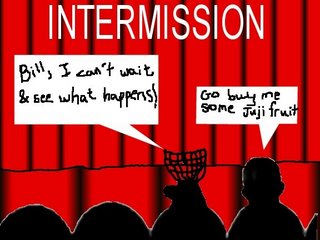Secrets of the Silver Screen - Sagging Middles
 It's been a while since I've posted on movies, but I was relaxing in front of the tube-o-brain-death the other night and stumbled across the great classic flick, Gone with the Wind. It's difficult to bypass such a film, so I didn't try. Instead, I noticed something I'd never noticed before about the movie's structure--particularly about the structure near the center of the film--and I think there's a tip or two there for any writer struggling with a sagging middle (and I'm not talking about the end result of eating too much buttered popcorn, either).
It's been a while since I've posted on movies, but I was relaxing in front of the tube-o-brain-death the other night and stumbled across the great classic flick, Gone with the Wind. It's difficult to bypass such a film, so I didn't try. Instead, I noticed something I'd never noticed before about the movie's structure--particularly about the structure near the center of the film--and I think there's a tip or two there for any writer struggling with a sagging middle (and I'm not talking about the end result of eating too much buttered popcorn, either). Back in the old days, when people used to walk back and forth to school in ten feet of snow (uphill, both ways), the middle of a long film brought along with it an intermission. People would get up, stretch their legs, head for the aforementioned popcorn, some soda and other sweet treats, and then they'd stroll back to the theatre (or their car) to watch the rest of the flick. Unless, of course, the movie stunk, and then they'd just leave.
Hmm. So what did the screenwriter do to ensure their audience didn't vanish?
Let's take a look at Gone with the Wind to see how one classic middle was stuffed too full of story questions for viewers to even consider drifting further than the goodie cart.
Before I start, I have to hand it to Margaret Mitchell; that lady knew how to write! Still, Sidney Howard and David Selznick, the screenwriter and producer respectively, had to take Mitchell's work and make it filmable, settling on pacing, scenes, dialogue and more, including finding a great place to break for that intermission.
We all know the setup: Scarlett is a selfish Southern belle--strong and defiant, beautiful and manipulative. She has a warped view of men, particularly Ashley, the weakish gentleman she thinks she loves.
The movie progresses at a good clip. Scarlett proclaims her love for Ashley and is snubbed. She meets Rhett, the Civil War begins, she marries a would-be soldier and is soon widowed. About a third of the way into the story, we see Scarlett caring for wounded soldiers in Atlanta. And then the war descends fully on the city and we see a mass exodus – smoke and fire and chaos – but Scarlett can’t leave because Melanie (Ashley's wife) is about to have her baby and needs her help. Scarlett is forced to deliver the baby alone. Finally, she flees with Rhett's help, determined to get back to her home, Tara, even when bandits attack them, desirous of their horse.
Good place to stop? Eh. Let's see how things can get worse.
Rhett abandons Scarlett, Melanie and her newborn child to join the south's failing army, leaving her to finish her journey alone. Scarlett hides her party from enemies beneath bridges, comes upon death in all forms, wears herself and her horse down, and finds destruction everywhere. Tara, once she finally arrives, still stands--a miracle and the first uplifting moment Scarlett experiences in a long while.
Some might think THIS marks a great spot for an intermission, but not really, since the tension is flat.
Instead, nothing is as Scarlett expects at Tara: her mother has died, her father seems to have lost his mind, they have no money, they have no food, their barn has been burnt down, they have lost most of their servants. Scarlett is again alone; she must now not only save herself, she must save her family, her home and the slaves that remain at Tara. Starving, she digs into the earth and finds a radish; she eats it, but her long-empty stomach revolts and she vomits. In that horrible moment, she digs deep within herself as well and uncovers her own root - pure strength of will. She stands, raises her fist to the sky and makes a vow:
 "As God is my witness, as God is my witness, they're not going to lick me! I'm going to live through this, and when it's all over, I'll never be hungry again - no, nor any of my folks! If I have to lie, steal, cheat, or kill! As God is my witness, I'll never be hungry again."
"As God is my witness, as God is my witness, they're not going to lick me! I'm going to live through this, and when it's all over, I'll never be hungry again - no, nor any of my folks! If I have to lie, steal, cheat, or kill! As God is my witness, I'll never be hungry again."And that’s how part 1 ends. Tension amped to the max, heroine at her limits, all of us wondering what she’ll do next and hoping this selfish woman succeeds.
Big story, worsening situations, personal challenges, forced character growth, black moments...cure for a sagging middle? You betcha!

 posted by Therese Walsh at
posted by Therese Walsh at 


2 Comments:
Good points, Therese. This dovetails with the Hero's Journey, which I've been studying lately. The Hero's Journey includes a phase called the Ordeal, which occurs somewhere around the middle of the story. And without it, yup, I think you have one sagging middle.
I'm definitely keeping this in mind when I go back in for the edits of my curring wip.
Make. Things. Worse.
It also doesn't hurt having Clark Gable in there for eye candy.
Post a Comment
<< Home